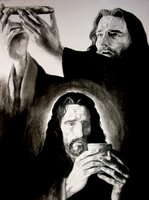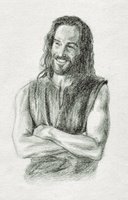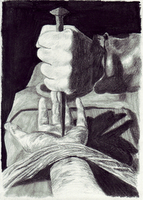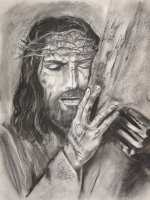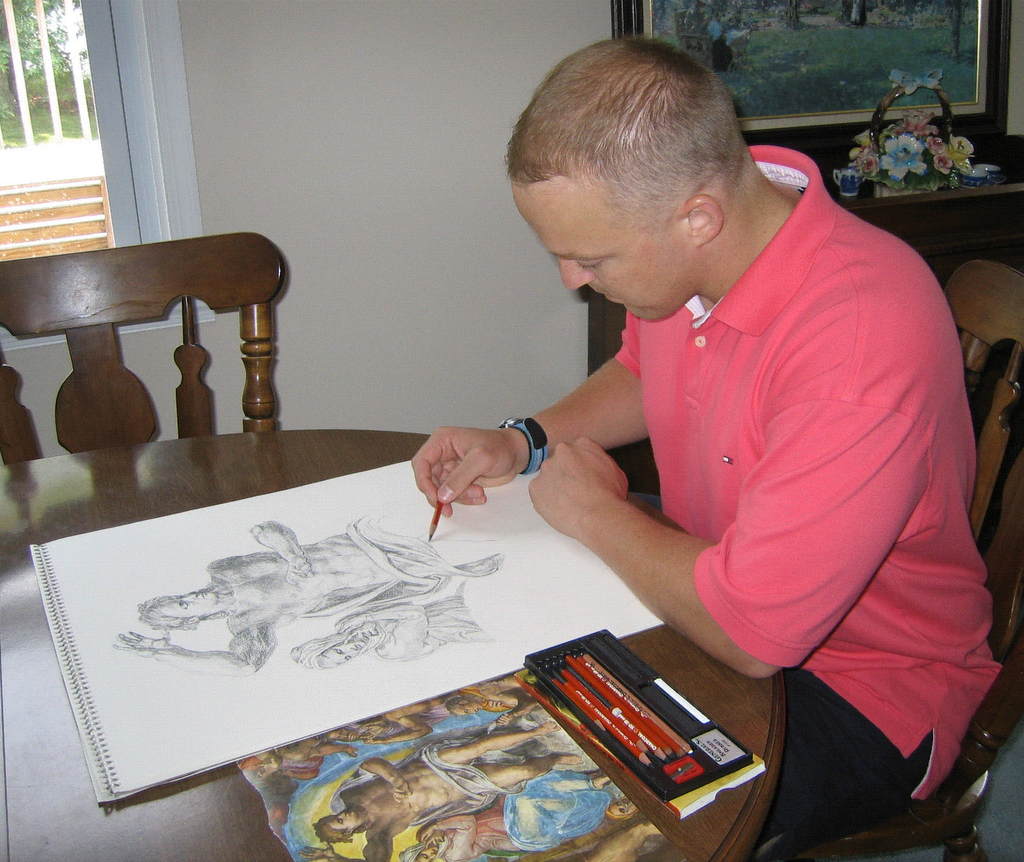COPY OF RUBLEV'S ICON OF THE TRINITY
 I fear that every lover of traditional Eastern Icons will shudder at this copy of St. Andrei Rublev's Icon of the Blessed Trinity. My good friend commissioned it for the cover of his ordination invitations. He will be ordained to the priesthood in the near future. As a draftsman who is largely unschooled as a painter, I feel that I have transgressed the rules surrounding sacred icons by rendering this piece in pen and ink, but it was a great spiritual experience for me to read about the icon, and to pray before and during the execution of this copy.
I fear that every lover of traditional Eastern Icons will shudder at this copy of St. Andrei Rublev's Icon of the Blessed Trinity. My good friend commissioned it for the cover of his ordination invitations. He will be ordained to the priesthood in the near future. As a draftsman who is largely unschooled as a painter, I feel that I have transgressed the rules surrounding sacred icons by rendering this piece in pen and ink, but it was a great spiritual experience for me to read about the icon, and to pray before and during the execution of this copy.For those who have never seen the icon, the scene is taken from the book of Genesis, and Abraham's three angelic visitors who prophesied the birth of Isaac and enjoyed the hospitality of the patriarch and his wife, Sarah. Early Christian theologians immediately saw this encounter to be an early revelation of the Divine Trinity, three persons in One God.
I was struck while working on this project by the stark contrast between western Christian artists and their eastern counterparts. Largely, the canon of art history in the west has not expected its artists to be saintly or holy, but the East expects its Iconographers to be holy in their personal lives and the execution of their work. Generally, it seems that the west is marked by pride in its work, while the east is marked by selflessness(Icon painters do not sign their work, and so neither have I here). Having finished this poor copy, I stand in awe of their dedication and their legacy of sacred art.
"One can say without fear of contradiction, that nowhere in the world is there anything like [Andre Rublev's icon of the Holy Trinity] from the point of view of theological synthesis, symbolic richness and artistic beauty." -Paul Evdokimov





